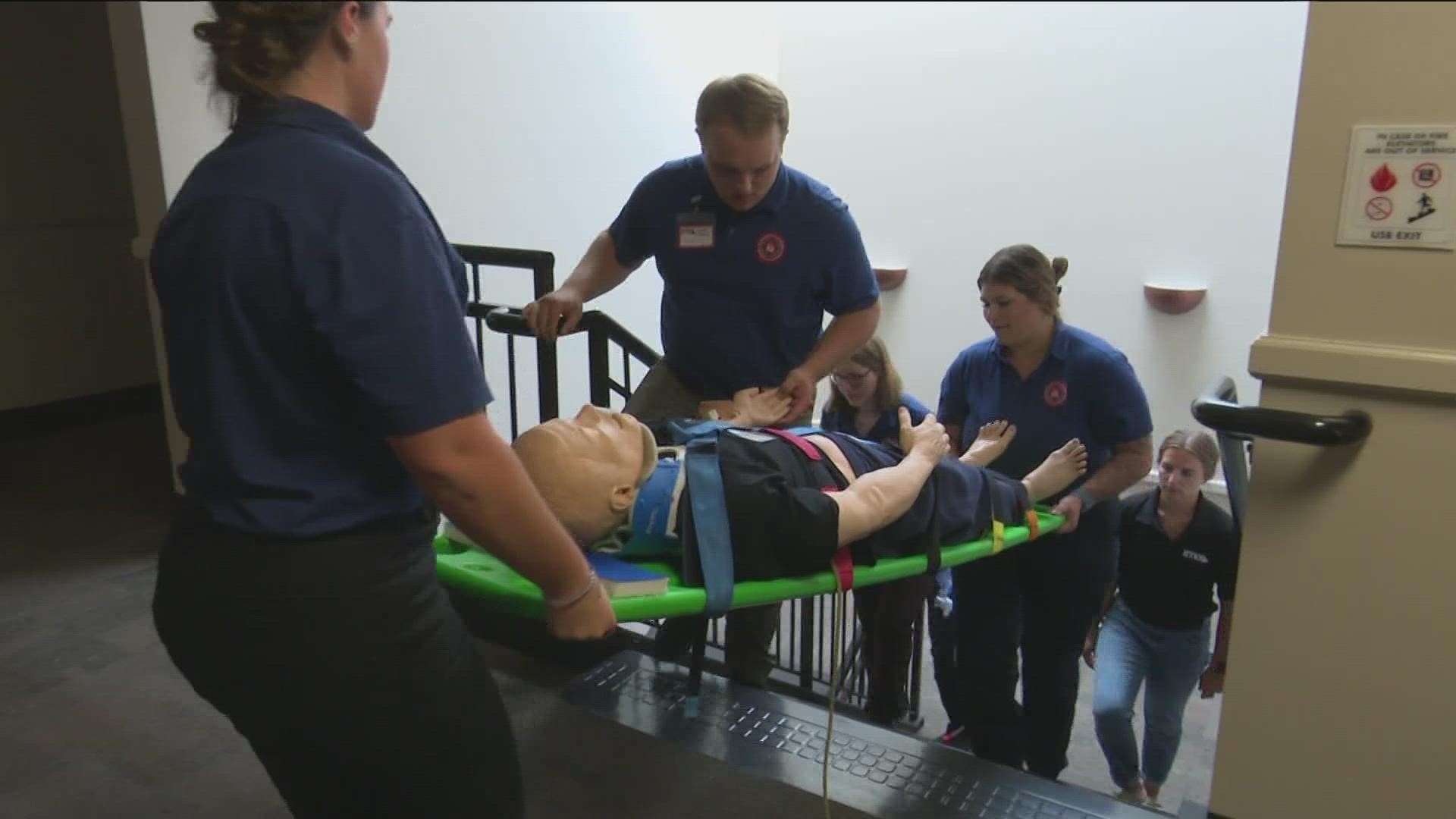BOISE, Idaho — Rural communities across Idaho continue to struggle with emergency medical care services, according to the Idaho Office of Performance Evaluation (OPE). Idaho law does not designate EMS as an essential service so they do not receive a lot of funding through the state.
Later this week, the Idaho Department of Health and Welfare's Health Quality Planning Commission (HQPC) will meet to discuss ways to help fill the EMS gaps and plan for the future.
While state leaders look to create solutions for EMS across the state, local schools are doing the work too. Idaho Medical Academy, based in Boise, trains about 500 emergency medical technicians (EMT) each year.
The school also offers classes in CPR, Advanced EMT, phlebotomy technicians and more. Each year, they see about 3,000 students in total.
"This is the first step for students who are interested in going into healthcare," said Justin Raney, the director of the Academy. He added their trainings can lead to people becoming a paramedic, working in a hospital, fire department and even on a ski patrol.
The school trains people from all over Idaho and the country with its online and hybrid classes so even rural parts of states can participate and get trained. Raney said the programs allow people to work at their own pace if they have another job or obligation, while also not having to travel to Boise if they do not live nearby. Students complete their assignments online, then travel to Boise to complete a hands-on skills week where they learn tools to become an EMT.
Raney said they have been able to help fill a need in rural areas of Idaho, like Riggins EMS and Orchard Fire Department, where many departments are volunteer-based and underfunded.
"Most of their funding is from volunteers doing community events and stuff like that," Raney said. "When COVID hit, a lot of those community events went away and lost a lot of resources."
In Idaho, 69% of rural areas rely on volunteers according to a report from OPE. It also shows the state of Idaho has nearly 2,000 EMS volunteers, which make up 40% of EMS providers statewide.
Raney believes while many people do want to serve their community, what hurts rural agencies are areas not having enough access to training and education nearby or it being too costly to hire and bring in an instructor for the department. He said hybrid classes may be a tool to help fill EMS staffing shortage needs quicker.
"[A department] might have one person who just needs to get their EMT [certification] and they're like, 'hey, we can't put on a class.' But they can remote in and take a class through us and get that person to become an EMT," Raney said.
Upon a student's graduation from one of Idaho Medical Academy's courses, Raney said they sometimes help place them in rural areas that are struggling to find staffing.
EMT student Colton Baratti is taking his new EMT knowledge back to Twin Falls, where he is surrounded by different communities, like Jerome, Kimberly, Hansen and Buhl.
He is originally from Filer, where his father was a volunteer firefighter. He enjoyed watching his dad help put out fires around the community and interact with neighbors.
While he has intentions to one day work for the Twin Falls Fire Department, he said would not mind working for a smaller agency to start out. Baratti said as the Magic Valley grows, he knows those departments will need more help.
"I think it's really important for hometown type of people that know the area really well and everything to help fire department or EMS or paramedics," Baratti said. He added hopes to fill those needed gaps in staffing.
According to the HQPC's agenda, they will meet on August 4 to discuss staffing in rural EMS agencies. They will discuss OPE's report which will be presented by DHW's bureau chief of EMS and Preparedness, Wayne Denny.
Watch more Local News:
See the latest news from around the Treasure Valley and the Gem State in our YouTube playlist:
Download the KTVB mobile app to get breaking news, weather and important stories at your fingertips.

